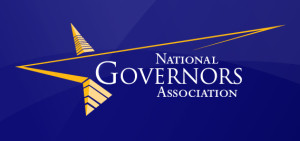Planning and Managing Distance Education Systems: Societal Systems
Farhad Saba, Ph. D.
Founder and Editor, Distance-Educator.com
Basic characteristics– These systems include legislative bodies, regulatory and administrative organs of the executive branch of governments at various levels from national to local, and civil organizations. Their primary responsibility is to pass legislations, determine, and implement policies, rules and regulations, and provide funding resources. While government funding of education remains an important resource, private charitable foundations and professional organizations are becoming an important source of financial support for education.
In recent years volatility in societal systems that have had no direct relation to education has severely impacted the level and sources of funding available to institutions of higher education.
Key personnel– Professionals in this system include legislators, lobbyists, and attorneys, and members of the executive branch of the government in several agencies and at different levels from national to local, such as,
- the US Department of Education and the Federal Communications Commission;
- charitable organization;
- accreditation commissions;
- professional associations
Impact on Other Systems Level– The actions or inaction of key players at this systems level impacts all other system levels in this model ranging from hardware and software that can be made available to educational organizations to telecommunication services, such as, gaining access to bandwidth as well as use of copyrighted materials for educational purposes and patenting research results. In recent years volatility in societal systems that have had no direct relation to education has severely impacted the level and sources of funding available to  institutions of higher education. The sudden and unexpected collapse of the housing market coupled with economic turmoil in Europe, which led to the recession of 2008, is a prime example. State coffers were emptied soon thereafter, and colleges and universities have had to adopt an unprecedented austerity budget from which they have not recovered yet. As a result universities across the board have been compelled to look for different income models at the base of which is increasing diversity of sources of revenue ranging from asking students to pay higher tuition to bolstering their fund raising activities, improving their endowment portfolios, and investing in expensive research facilities with the hope of receiving financial benefits when research results are commercialized.
institutions of higher education. The sudden and unexpected collapse of the housing market coupled with economic turmoil in Europe, which led to the recession of 2008, is a prime example. State coffers were emptied soon thereafter, and colleges and universities have had to adopt an unprecedented austerity budget from which they have not recovered yet. As a result universities across the board have been compelled to look for different income models at the base of which is increasing diversity of sources of revenue ranging from asking students to pay higher tuition to bolstering their fund raising activities, improving their endowment portfolios, and investing in expensive research facilities with the hope of receiving financial benefits when research results are commercialized.
As financial pressure on institutions of higher education increases the role of charitable organizations in sponsoring specific programs and projects become more noticeable. Several organizations, such as the Lumina Foundation and Bill and Melinda Gates Foundation have already impacted higher education significantly. Although the involvement of private foundations and charitable organization in higher education in the long term remains to be seen, it is not difficult to imagine that institutions of higher education will have to depend on private support if their government sources of financial backing continue to dwindle.
Despite reducing financial aid to institutions of higher education state governments remain to be providers and regulators of online education. In January 2013 the National Governors Association called for a review of policies regarding online education. A press release issued by the Association stated:
 Governors should consider calling for a review of current state laws and regulations surrounding authorization of online programs, focusing on questions in three key areas:
Governors should consider calling for a review of current state laws and regulations surrounding authorization of online programs, focusing on questions in three key areas:
- Purpose: What is the state trying to accomplish through the authorization process?
- Requirements: What is required of institutions seeking authorization? How do the requirements relate to the purpose(s) of authorization?
- Capacity and cost: Does the state have a sustainable model for authorization, assuming that the number of online institutions and programs seeking authorization will continue to grow?
- Could economies of scale be realized by joining with other states to authorize online institutions and programs? (p 5).
Depending how the governors approach the issue of state authorization individually or in collaboration with each other, it will have far reaching ramifications for how institutions of higher education may offer academic programs to students via the Internet.
The impact of government regulatory activity in enabling K-12 schools, as well as colleges and universities to gain access to a range of telecommunication services from microwave transmission bandwidth to cable TV, the Internet and telecommunication satellites has also been dramatic since the onset of the analog to digital revolution of the mid 1980s.
The impact of government regulatory activity in enabling K-12 schools, as well as colleges and universities to gain access to a range of telecommunication services from microwave transmission bandwidth to cable TV, the Internet and telecommunication satellites has also been dramatic since the onset of the analog to digital revolution of the mid 1980s. The changes in telecommunication industry in this time period has been so drastic and revolutionary that current systems and technologies that are at the fingertips of every student, faculty and administrator today bear no resemblance to what was available to them even at the turn of the century. Primarily, due to the deregulation of the telecommunication industry in the 1980s, and breaking up of the monopoly of the Bell Telephone System many competing entities have emerged which are offering an unprecedented range of telecommunication services to institutions as well as individual customers. In the years to come, it is expected that innovation in telecommunications, and rule making by regulatory agencies, such as, the US Federal Communications Commission (FCC) will continue to have a major effect on ways and means institutions of higher education can communicate with their learners.
Similarly, the copyright law will continue to determine what is possible to do with digital information sources. The prime example here is when in 2004 Google decided to digitize books that were in research and public libraries, and make some portions of them available on the Internet it faced litigation by the Association of American Publishers for copyright infringement. It was not until 2012 that the two sides agreed to allow U.S. publishers decide whether to make their books and articles available for digitization. This settlement, however, does not end the controversy as the US Authors Guild maintains that the ruling does not include the right of the authors; a right that continue to be encroached on by Google.
The process of accreditation is also being modified drastically by the increasing interest of the US federal government to play a more active role in it. This is while global telecommunications has made a more democratic process of accreditation possible as educators make their courses and other intellectual property openly and freely available on the Internet. Such open and free access is desirable by the growing demand for higher education worldwide, but a more open and democratic system of accreditation may not necessarily assure the quality and integrity of offerings. This dynamic interplay will unfold in the future if the current trend for opening educational resources continues.
These are but a few examples of the role of societal systems on the future of higher education and its impact on the functions and processes of other system levels. The tension between technology to be used for democratic ends or for regulating systems and procedures for educators will be a major issue as new technologies confront old rules and regulations and require setting new ones. As the penultimate systems level in this model, societal systems are the most complex other than the global systems. Inevitably their effect will be felt on all the other system levels in a greater degree as compared to the other levels in this model.








